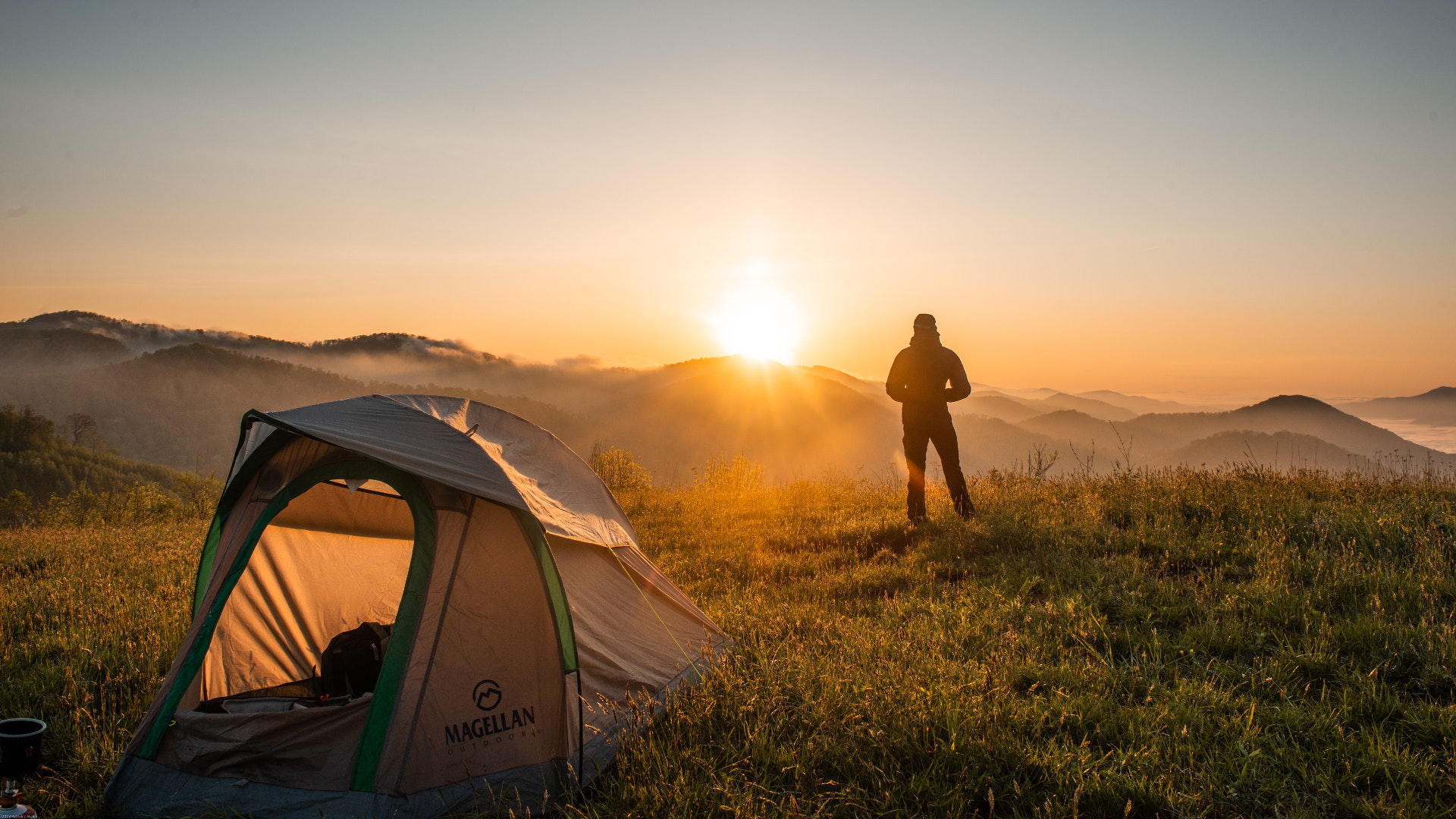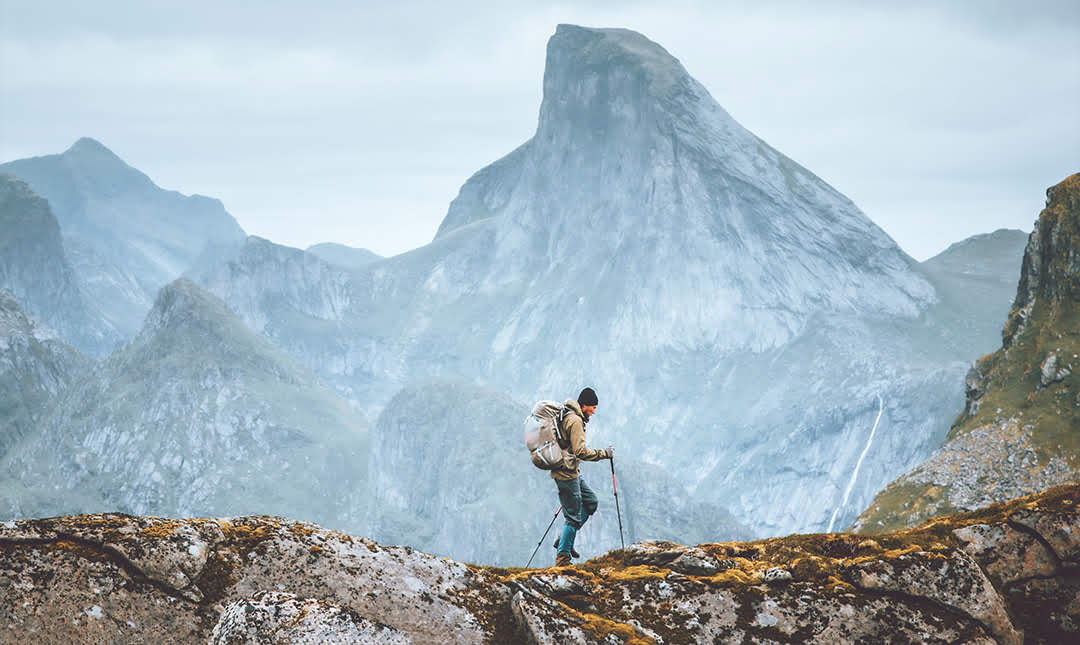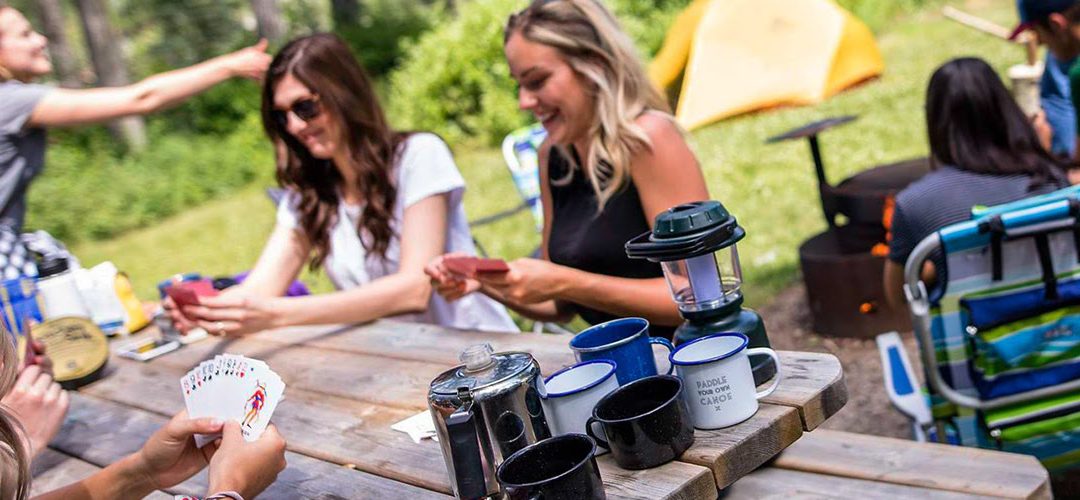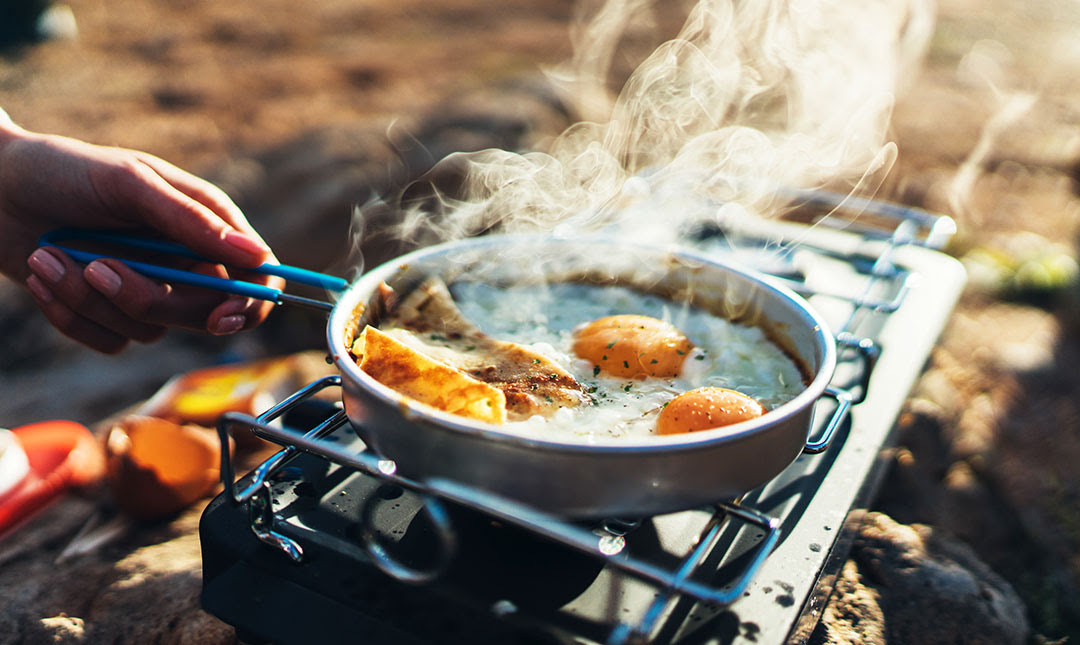When it comes to camping, the gear you take along can make or break the experience. Pack right, and you’ll be ready for any adventure — whether you’re hitting the beach in British Columbia or alpine hiking in Alberta. Forget too many essential items, though, and you could literally find yourself up a creek without a paddle.
Of course, remembering to pack everything you’ll need for your next trip into the wild can be tricky — so we’ve come to the rescue. Behold, our ultimate guide for what to bring along whenever you go camping!
See also: What to bring when camping in the rain.
Don’t Leave Home Without These Essential Items
We’ve split this list up into two different sections. This first one deals with the stuff you absolutely can’t afford to leave behind: things that pertain to safety and physical needs (like eating, sleeping, and going to the bathroom). There are some other things you’ll probably want to have on hand as well to make sure your trip stays fun, but we’ll get to that in the next part of the article. For now, consider these items your top priority:
Clothing and Shelter
Sleeping under the stars can be very romantic — but only when it’s a choice. You don’t want to be staring up at the night sky because you forgot your tent. All conscientious campers need to pack weather-appropriate clothing, too. Here’s a checklist that’ll keep you warm and dry on your next trip:
- A tent: make sure it’s the right size for the number of people in your party, and that it can handle any weather you expect to encounter. If you’re not sure how to choose an appropriate tent, try MEC’s Find Your Tent quiz.
- Versatile clothing: you probably can’t take your whole wardrobe on a camping trip (unless you have a really big vehicle), so it’s best to opt for clothing that can handle a wide range of temperatures. If you can afford merino wool, it’s always a smart choice for base layers — it’s a warm, lightweight material that breathes easily and insulates even when wet, which makes it perfect for both physical activities and staying cozy in the cold.
- Rain-proof outerwear: into every life, a little rain must fall… and if it happens while you’re camping, you’d best be prepared! Bring a lightweight waterproof (not water “resistant”) jacket on every camping trip, and consider waterproof bags for any items you want to keep dry.
- Proper footwear: don’t take those brand new Nike kicks on a muddy mountain trail — you’ll regret it, we promise. When it comes to footwear, remember: function always comes before form. Look for durable, weatherproof shoes with excellent traction and good support so that you can scamper up slopes and abscond from animals if you need to beat a hasty retreat.
Food and Cooking Supplies
Food is just as important as shelter, so be sure to consider your consumable goods when planning your journey and save room for the following:
- Firestarters and tools: you’ll probably want to start a fire at some point during the trip, so make sure you bring a means to do so. Matches are the most basic tool for this task, but you can also bring flint and steel or a cigarette lighter. Magnesium firestarters exist too — but make sure that if your firestarter needs fuel you check it before leaving. It’s also a good idea to bring a backup, just in case your first one gets ruined or fails. Don’t forget to bring a sturdy and good quality axe for your wood cutting needs.
- Cooking appliances: building a fire isn’t the only way to prepare food in the wilderness. Portable ranges and hot plates are an option too — as long as you have extra propane tanks or a source of electricity nearby.
- Dry and/or canned goods: as a general rule, you don’t want to bring delicate things camping. When it comes to food, that’s especially true — if it can easily be crushed or spilled, leave it at home. Dry goods like jerky, granola, and nuts are your best friends here, along with canned protein and vegetables. Oh, and if you’re building a fire, don’t forget the ingredients for s’mores!
- Canteens and water filters: eating is important, but so is drinking — and your body can go longer without food than it can without water. The best move is to fill your canteens with fresh water before you leave so that you won’t have to purify it in the wild, but if you run out it’s good to have filters or purification tablets at the ready.
- Garbage bags: whatever you pack in, you must pack out. Respecting the environment you’re in means it’ll be waiting for you when you come back!
Personal Hygiene Products
We’re not saying you should be scared of a little grime, but there’s also no point in getting filthier than necessary. How do you use the bathroom when there’s no bathroom in sight? Start by bringing these:
- Toilet paper: no, you can’t just use leaves. Don’t believe us? Try it at home first, and let us know how it goes — we’ll wait. You can also purchase AMAZING biodegradable wipes that are good for a mini-bath and TP. Great for your bottom and the environment.
- Soap: germs travel the same way in nature as they do in towns and cities. Soap and hand sanitizer will prevent you from contaminating your food, spreading illness, and smelling bad.
- Toothbrushes and toothpaste: bad breath can ruin anything, even the unparalleled majesty of nature. Why risk it?
Emergency Equipment
Expect the unexpected when you venture into nature. Taking these items along will help protect you from the scary stuff:
- A pocket knife: need to make kindling from a branch? Sharpen a stick to use as a replacement tent-peg? Open a can? Screw an appliance back together? Hunt a small animal? A good utility knife can do all that, and more. Don’t leave home without it.
- Maps, compasses, or GPS systems: don’t count on Google Maps when you’re out in areas with patchy service. Make sure you’re taking along something that can tell you where you are if you get lost.
- Flashlights and headlamps: fire is bright, but it sure doesn’t travel easily (especially in a forest). Taking along a portable light source will help you find your way in the dark, whether you’re making your way back to camp from a hike or going to the bathroom in the middle of the night.
- Bear spray: better to have it and not need it than to need it and not have it. ‘Nuff said. While we are at it, don’t forget the bug spray.
Don’t Forget the Fun Stuff
We’ve covered the really important things, but if you want to enjoy your camping trip to the fullest possible extent then you might want to save room for a few of these creature comforts:
- Sporting equipment: if you’re going camping in an area that lends itself to certain activities, make sure to pack the appropriate gear — inflatable rafts and swimsuits for campgrounds near water, cross-country skis and poles for winter camping in snowy woods, etc.
- Toys and games: there’s often as much fun to be had in the tent as there is on the trail. Packing a deck of cards and some board games can be a great way to stay entertained when the weather gets rough, and a stuffed animal or two can keep a toddler from getting scared at night when you’re camping as a family.
- Books: it’s so hard to find time to read these days. Why not take advantage of the solitude that nature offers? A thick volume or two can help pass the time when it’s raining, and it feels very rugged to sit on top of a mountain and read Hemmingway. Trust us.
Respect Nature and Nature Will Respect You
People who prepare for their camping trips normally have a blast. If you pack the right items, you’ll spend the entire experience warm, well-fed, and well-protected. Refer to this list often as you’re packing for your next excursion, so that you and your party can face the elements with confidence.





Recent Comments